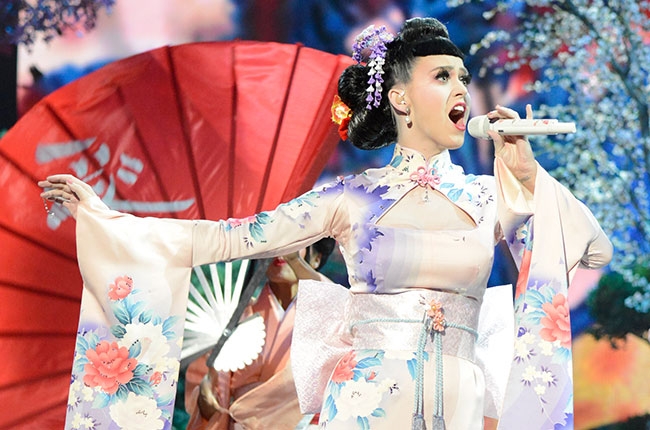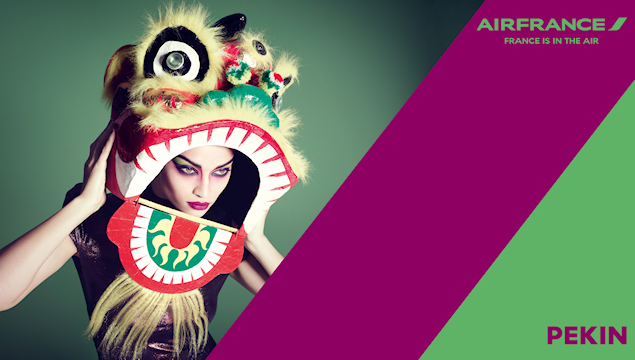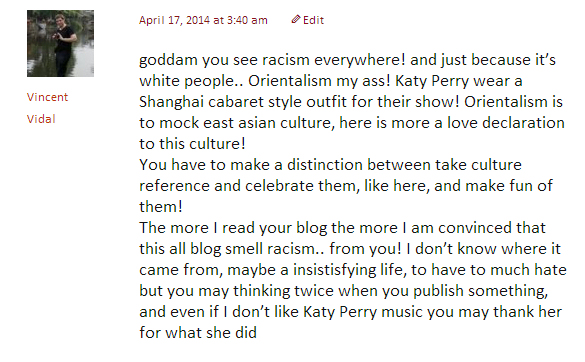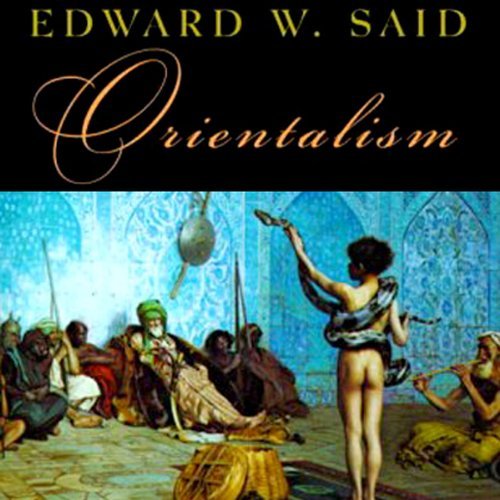It always surprises me how, even among anti-racist activists (let alone the general population), there is a general ignorance of what Orientalism is and how it contributes to contemporary examples of anti-Asian racism. Recently, I wrote a post about Air France’s new ad campaign “France is in the Air” — which contains images that are both mundane and textbook examples of modern Orientalism — and have since been inundated by many tweets and comments arguing that the campaign is “not racist”.
https://twitter.com/SaraPiou/status/456540692668354561
@originalspin @airfrance @reappropriate There's nothing remotely wrong with these ads, clichés of course but definitely not racist
— Varoon (????) (@Varoon7) April 16, 2014
https://twitter.com/havidon/status/456484803504648193
As evidenced by the repeated reference to the ads as “cliched” or the assertion that the ads are attempting to “honour” Asian culture, most of these comments seem to emerge out of a fundamental misunderstanding of what Orientalism is and how it operates.
And, perhaps that’s not entirely surprising. Although Orientalism has been asserted to be one of the three pillars of White supremacy by Andrea Smith in her seminal paper “Heteropatriarchy and the Three Pillars of White Supremacy” — with Orientalism as a separate and distinct logic alongside anti-Blackness and anti-Indigenous colonialism — Orientalism also appears to be among the least discussed and most poorly understood logic of White supremacy even within digital anti-racist spaces: a 30 second Google search on “Orientalism” pulls up only a handful of articles, and my recently published Air France article (which incidentally was written from the assumption that the reader already understands what Orientalism is) appears on the first page. While I have several ideas as to why Orientalism remains so minimally explored among anti-racist thinkers of the digital realm, the recent responses I’ve received to my Air France article suggests that a primer on what Orientalism is, and how it operates as an underlying motivation for anti-Asian racism, is perhaps long overdue.
So, without further ado: what is Orientalism?
What is Orientalism?
Vincent Vidal’s comment above provides perhaps the best example of what Orientalism is not. Orientalism is not “to mock East Asian cultures”, although it can certainly contribute to or culminate in the mockery of East Asian cultures.
Popularized by the theorist Edward W. Said in his seminal book by the same name, Orientalism has become one of the founding principles of post-colonial and critical race theory. Orientalism is, in a nutshell, “the way that the West perceives of — and thereby defines — the East”.
Imagine you are a 13th or 14th century European. The Silk Road has just recently established contact and trade with a distant land; a land so far away and so difficult to reach that it exists only in the imagination of the average European. Earlier accounts of this land have been passed down by the Greeks from centuries ago, telling of an alien world inhabited by “dog-faced creatures”, or Phasians so yellow it was as if they “suffered from jaundice” (summarized by Gary Okihiro in “When and Where I Enter”). Centuries after that, Egeria’s 4th century text Peregrinatio ad terram sanctam describes an exotic, fantastic Asia that “served to highlight the positive, the real, the substantial Europe”. These tales are not just stories; for the West, they become synonymous with “what Asia is”. In recounting Marco Polo’s travels, one historian wrote “[Polo’s] picture of the East is the picture which we all make in our minds when we repeat to ourselves those two strange words ‘the East’ and give ourselves up to the image which that symbol evokes”.
Thus, almost from the moment of first contact, the West established a unique and specific relationship with the East — one that still impacts and influences our conceptions of these regions today. In this relationship (as defined by Edward Said), the West is the “Occident”: the norm, the standard, the centre, the fixed point around which the rest of the world orbits. The East is, by contrast, the “Orient”: the abnormal, the exotic, the foreign, the Other defined specifically by its deviancy from the Occidental, Western norm.
Importantly, this relationship — what Said terms “Orientalism” — draws upon exaggerations of both Occidental and Oriental traits in order to create an Orientalist fantasy that is a fictional recapitulation of both East and West. Western men are reimagined as universally Godly, good, moral, virile, and powerful — but ultimately innately human. By contrast, those traits that best serve as a counter-point to the Occidental West are emphasized in the West’s imagined construct of the East: strange religions and martial arts, bright colours and barbaric practices, unusual foods and incomprehensible languages, mysticism and magic, ninjas and kung fu. Asia becomes innately unusual, alien, and beastly. In Orientalism, Asia is not defined by what Asia is; rather, Asia becomes an “Otherized” fiction of everything the West is not, and one that primarily serves to reinforce the West’s own moral conception of itself.
It is also important to note that Orientalism historically arose both from an attempt to “honour” Eastern cultures as well as to redefine them for the West. Orientalism purports to be a faithful recreation of Eastern traditions and peoples, but actually draws upon real practices and traditions to create an Eastern construct that is largely exaggeration and myth. Thus, it is highly fallacious to presuppose that cultural appropriation motivated by fascination with (rather than malice towards) the East renders the cultural appropriation innocent; in Orientalism, the fascination is, itself, part of the problem.
How Orientalism motivated historic anti-Asian atrocities
While Orientalism led to a Western fascination with Asia as an exotic land — equal parts captivatingly romantic and terrifyingly barbaric — perhaps the most important aspect of Orientalism is how it defined Asian men and women against the Western norms of gender identity. Compared to stalwart European men and chaste European women, Asian men and women were recast in the European imagination as specific counter-points to these expected gender norms: Asian women became hypersexualized, unsatiable, creatures — in one Medieval text described as standing thirteen feet tall and having ox-tails emerging from their genitals, whereas described by Marco Polo as either “dainty” courtesans or voracious prostitutes — whereas Asian men are portrayed as slight, stooping, meek and unassertive barbarians who attack in faceless hordes to make up for their easy defeat in single combat by European men.
Furthermore, in Orientalism, the land of the Orient is, itself, feminized, which invites subsequent conquest — in overtly sexual language — by the virile West. Polo discusses the many Asian wives that Western traders take, literally wresting the Asian woman from the Asian man. Columbus’ endeavour to discover Asia by sea was cast as “taking possession” of these lands. Thus, in Orientalism, the Orient is not merely the “Other” of the West, but an Other that stands as a prize or trophy, to be dominated or conquered by the West.
Importantly, when the West is the standard against which the Orient is defined, the Orient cannot, by definition, be a point of empathy. As defined in its distance from norm, Asia instead becomes a thing to be possessed, and populated with a people who are “not quite normal” and therefore “not quite human”. In short, when the Orient becomes a land of the “Other”, the people of the Orient become the “Other”, too; Orientalism becomes dehumanization.
This, not surprisingly, paved the way for multiple Western efforts to colonize — economically, culturally, and militaristically — Asia. I needn’t go into the many examples of the West’s incursions into the East, all of which share at their core the perception that the West has a moral and cultural imperative to subdue through whatever means necessary the bizarre traditions and abnormal people of the Eastern “Other” based entirely upon the Orient’s “deviancy”.
How Orientalism leads to anti-Asian racism
A quick consideration of the many anti-Asian stereotypes of today reveal their roots in the over-arching Orientalism that still persists in the West’s conception of the East. We are the Perpetual Foreigner — never quite normal, never quite “one of us”: this is a contemporary recapitulation of the Asian as the “Orientalized Other”. Sexually, many of the gender stereotypes that were first invented during Marco Polo’s time — the hypersexualized lotus blossoms and dragon ladies; the barbaric and cowardly effeminate men — still thrive today. Even the Model Minority myth has its roots in Orientalism: simultaneous awe of exotic Asian cultural traditions that emphasize academia with fear of the intellectual Chinese Yellow Peril threat.
Orientalism is frequently mistaken as being synonymous with cultural appropriation and misappropriation because the fantasy of Orientalism has been constructed and reinforced through the misappropriation of exaggerated Eastern cultural traits and practices to build and maintain the East as an exotic place of beauty and terror. When Katy Perry goes all-out geisha, she is invoking and perpetuating the theatre of Orientalism.

When challenged, defenders of Orientalism will claim that this theatre is a “love declaration” (as Vincent Vidal writes above), forgetting that these “love declarations” bear little resemblance to the culture from which they are appropriated, and further removes the agency of the East to “represent itself, [thereby preventing] true understanding”, as Said writes.
Furthermore, Orientalism refers not just to the cultural appropriation, but to the impact this appropriation has on our percepetion of Asia and Asian-ness. Orientalism is more fundamentally the positioning of Asian people as the proverbial “Other”, always serving as a counter-point to the normative West, forever an orbiting satellite, never able to define itself for itself within the Western cannon.
Orientalism eternally casts the Asian person as stereotype, and never allows the Asian body to be “normal”.
Is Orientalism racist?
So, in the end, one must ask whether Orientalism is racism. The answer to this question demands not only a definition of Orientalism — as I have provided here — but also a redefinition of racism, itself. Racism is not merely overt hatred or abuse of people based on race: it is not casual instances of race-based “mockery”. Racism is, more fundamentally, the institutions that perpetuate and allow acts of racial oppression to take place.
Orientalism is the cultural framework against which tangible racism is practiced against Asian people in the West. In America, when Chinese coolies are lynched, the act is justified by the perception of Chinese men as physically weak, economically invasive, and culturally barbaric. When Japanese Americans are interned, the act is justified by the belief that these citizens are innately un-American and perpetually foreign. When Asian and Asian American women are brutally raped, the act is justified by the assertion that the sexuality of Asian women invites deviancy. When Ronald Ebens and Michael Nitz beat Vincent Chin to death, the act is justified by the conflation of Chinese and Japanese as the faceless “Other”.
Now, don’t get me wrong: it’s not as if Air France is lynching people with their advertisements. But, so long as anti-Asian racism continues to occur, we must be willing to explore the underlying logic of that racism.
We must be willing and able to explore how the West continues to advance the theatre of Orientalism, and how that Orientalism forever positions the Asian body as “the Other”.
Am I being racist or Orientalist when I culturally appropriate things from the East?
If you are fascinated with a culture and its people because it represents the exotic and the foreign — in short, because it being different makes it “cool” and “edgy” — as Air France did, then, yes, you are being Orientalist.
And, if you dress up in yellowface while you’re appropriating Asian cultures to fuel an Orientalist fantasy of the East, as Air France’s models did, then yes, you are being racist too.



